How to grow cucumbers on a windowsill?
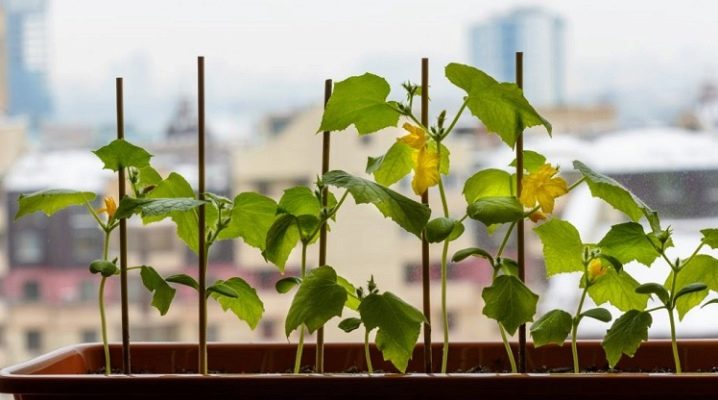
Many people would like to have a crispy vegetable on the table, regardless of the season and regional climate. But not everyone knows that it is quite possible to grow cucumbers on the windowsill. From the article you will learn how to do this correctly in an apartment environment.
We will tell you about the peculiarities of growing cucumbers in the room, about which dishes to choose for planting, which ones are suitable for this variety and how to plant them correctly. Experienced indoor cucumber cultivation lovers will share tips for beginners.
Features of growing in the room
At home, cucumbers on the windowsill can be grown both in spring and in winter, and at any time of the year they will grow regardless of the length of daylight hours or room temperature. In an apartment, all these moments can be adjusted and the desired environment can be created.
The harvest comes out no worse than a garden one, and sometimes even better. The percentage of product purity in such vegetables is definitely higher, but you cannot tell by taste. By the way, the cucumbers grown on the window are also suitable for conservation. It is important to choose the right varieties correctly.
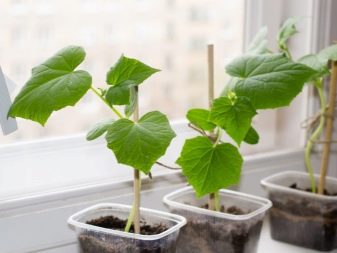
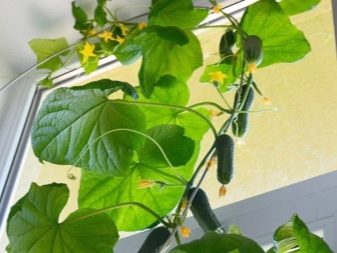
Suitable varieties
Immediately it is necessary to make a reservation that those seeds that go for planting in the garden are not suitable for growing on the windowsill. For a room environment, you need to choose self-pollinating varieties that give a bountiful harvest, and early ripening hybrids with female inflorescences. You can plant varieties for garden cultivation, but then you have to pollinate yourself, picking up a brush and conjuring over each flower. Now let's see which varieties are most suitable for growing at home.
- "Shchedryk". Early ripening variety, giving up to 3 ovaries in a knot. The fruiting period is 47 days. The fruits grow within 10 cm, and each cucumber weighs about 100 g. It gives a stable high quality crop - up to 2 kg per bush.
- "Khutorok". Also an early ripening cucumber for indoor cultivation, which bears fruit one month after germination. Fruits up to 10 cm in size are sweet, the plant is resistant to diseases, but requires pollination: you need to fertilize female flowers with male peduncles. If everything is done correctly, then at home you can get a harvest every month.
- "Full house" (similar to the variety "Nutcracker"). This variety is even suitable for pickling, despite indoor growth. However, gardeners emphasize that it is better to use such a cucumber in salads, in conservation it can give softness or emptiness. The crop can be harvested 45 days after germination, in each node there will be up to 3 ovaries. Fruit length - up to 12 cm, weight is usually within 100 g. Harvesting takes place every other day.
- "Khrustyk". A late-ripening variety with a liana-shaped bush. You can collect the first fruits after 50 days. During this time, the plant will grow to a height of more than 1 meter and will give 4 ovaries at each node. Fruits 10 cm long of good quality, hardy to transport. From one bush of this variety, you can collect up to 11 kg of cucumbers.
- "Masha". Also liana-shaped tillering, but an early ripening variety. The crop gives after 37 days from the moment of germination. Fruits in the form of gherkins (grow within 8 cm). The variety is resistant to diseases, it is stored for a long time not only in the refrigerator, but also in the basement. Suitable for salting.
- "Prestige"... Crispy gherkin without bitterness. It is a versatile variety suitable for salads and canning. Cucumbers have small thorny thorns that can be easily removed when washing vegetables. The germination capacity of the variety is 50 days.It is recommended to harvest often, but if there is a delay, the fruits will not outgrow.
- "Miranda"... High-yielding Dutch variety. Cucumbers are quite large (up to 12 cm), with excellent taste, without bitterness. Plants of these varieties are not afraid of heat and tolerate temperature extremes well.
All presented seed material (except for "Khutork") are self-pollinating hybrids that have proven themselves well in growing on windowsills at home. The most expensive are the seeds of Dutch breeders, they are sold by the piece.
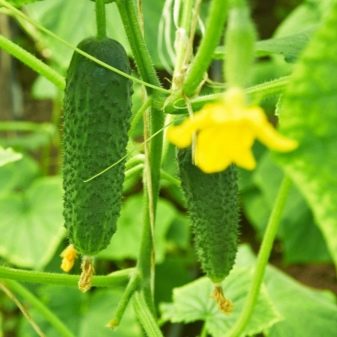
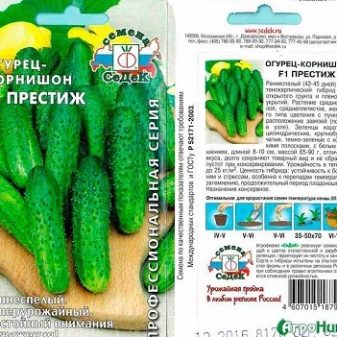
Choosing a container for landing
Ideally, several types of containers are prepared for planting cucumbers. The seeds are planted in plastic or peat cups: the former can be harvested from dairy products, and the latter are sold in specialized stores. Plastic bottles are also suitable for the growth of cucumber seeds: a part of the middle is cut out of them, and seeds are sown into the resulting "boats". Seeds are planted in small pots. But then more volume is needed.
Select the container size for transplanting seedlings so that at least 5 kg of soil can be poured into a container for one bush, and so that the root system has the opportunity to develop. These can be buckets, various boxes or cardboard boxes. The bottom of the latter is covered with polyethylene or sprinkled with expanded clay.
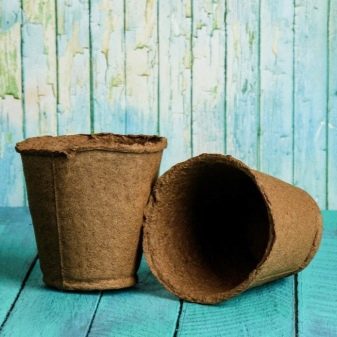
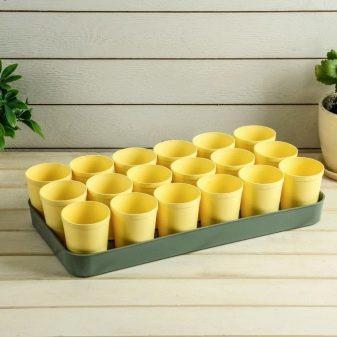
The soil
It is advisable to prepare the land for cucumbers for home cultivation in advance. Specialized soil can be purchased from the store, but since such soil is considered a seasonal commodity, it is not easy to find it, for example, in winter or autumn.
Let's consider how to prepare the desired substrate ourselves.
- At the bottom of the container for transplanting seedlings you need lay a drainage layer of expanded clay or river pebbles. This layer must be at least 5 cm.
- The soil for both seed material and seedling bushes should be the same and consist of garden soil (possibly of forest origin), fertilizers, chalk, ash and rotten foliage... Most (2/3) is soil, 1/3 is fertilizer and other ingredients, for example, 1 cup of chalk, 2 cups of ash, and 4 cups of foliage.
- Lay the prepared base in a container, leaving 4 cm from the edge.
- Before backfilling, the soil must be disinfected: you can pour it with hot water with potassium permanganate (weak pink solution) or another specialized preparation that is sold in horticultural outlets.
Freezing the soil will not help save insect larvae, since the eggs of most pests have immunity for the winter. At low temperatures, the larvae hibernate, and after thawing, they will begin to damage the bushes.
Also, don't go after exotic materials like coconut fiber. Take the more familiar components in the form of sawdust, leaves, and so on: they are in no way inferior to their overseas counterparts.
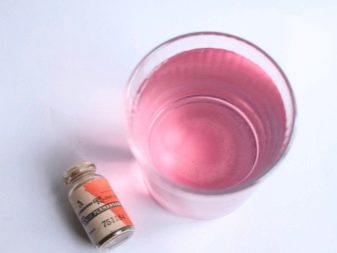
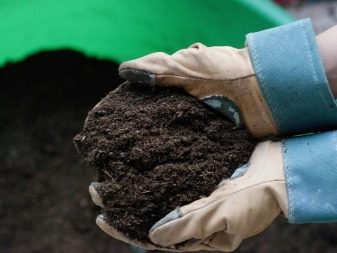
How to plant correctly?
To get a good harvest, you need to plant seeds, and, after waiting for shoots, transplant the seedlings into another container and already take proper care of the plants. Before sowing the seeds, prepare the place. It is better to lay a layer of polystyrene on the windowsill: this way the plants will be protected from drafts and strong heat from heating appliances. Foil paper or other reflective surface should be fixed to the slopes: this will increase the amount of illumination. For sowing, you can buy already processed cucumber seeds. They are more expensive, but there is no additional fuss with them: put them in cups, water and wait for shoots. Then we transplanted the seedlings into a larger container and wait for the harvest, taking the necessary care.
If the seeds are ordinary, it is advisable to disinfect them (with special means or a weak manganese solution) and germinate (keep in a humid environment for at least 2 days). When the seeds hatch, plant them in the ground. If you do not pre-soak, then it is better to plant 2 seeds in a glass at once, to be sure.You can fertilize the soil with urea mixed with nitrophos. For example, 1 teaspoon of the first component and 2 teaspoons of the second will give the correct dosage of nutrition for one bucket of prepared soil. The seed is laid 2 cm deep. After 5-7 days, sprouts will hatch. If you planted 2 seeds in a cup, get rid of the weak specimen, give the strongest the opportunity to develop further. Do not rush to tear up a weak sprout by the root, so as not to pull out another plant. It just needs to be cut or broken.
As soon as a strong seedling with permanent foliage has formed, the plants are transplanted to a permanent place. They do it as follows:
- a drainage layer and a prepared soil composition are placed in a five-liter plastic container (or other container of suitable volume);
- to easily take out the seedlings, the glass is watered abundantly and the bush is carefully pulled out along with the ground.
The seedlings are planted in another container with an earthen lump, making a depression and then covering the top with earth. Watering the new planting.
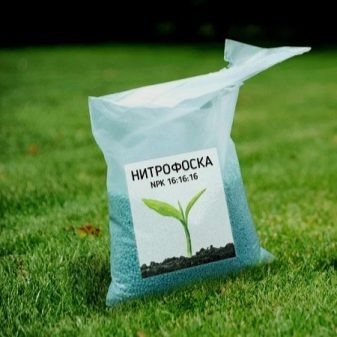

Care
Knowing step by step how to grow cucumbers at home, you can have fresh vegetables all year round. The cultivation technique is simple, the main thing is to transplant seedlings on time, pollinate during flowering, if it is not a self-pollinating variety, make a dive and properly care for the bushes.
Watering
Watering is desirable with settled water at room temperature, you need to moisten the soil every day, even in small portions... Do not allow the soil to dry out and form a crust on top: this will have a bad effect on air exchange processes.
If you grow cucumbers in winter conditions, when the room is heated by batteries and the air is mostly dry, install additional containers with water on the windowsill. You can put the container itself, in which the cucumbers grow, on a pallet and pour water there as needed.
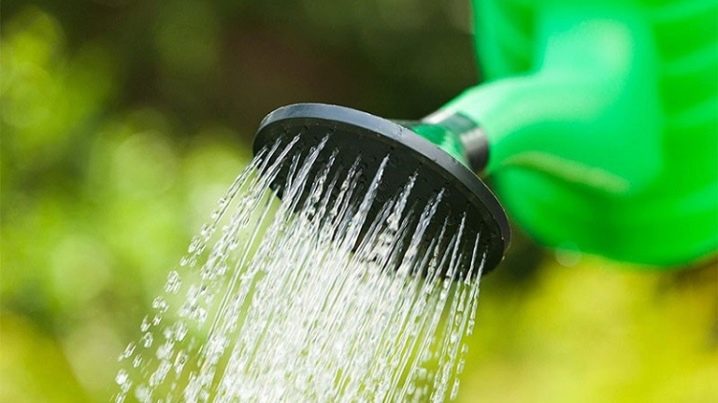
Garter
Cucumbers are climbing plants, and since you cannot allow them to crawl under the conditions of the room, it is imperative to create supports and tie the vines to them with a thick rope or twine... The support sleeper can be pulled along the entire length of the window sill if there are a lot of bushes. Choose a height of 2 or even 2.5 meters and fix the support. At the bottom, you need to hammer in nails or come up with another device for securing the thread (twine) around which the cucumber vine will twine.
As the lash grows, the container with cucumbers is lowered from the windowsill to the floor, increasing the twine. Failure to do this will result in lower yields because the vines will not grow to the desired length and will not produce a large number of nodes. If it is not possible to install a stationary sleeper on the windowsill, you can stick a high pole into each pot, fix the bush to it with a rope and allow the vine to develop along such a support.
You can also simulate a wide ladder support.
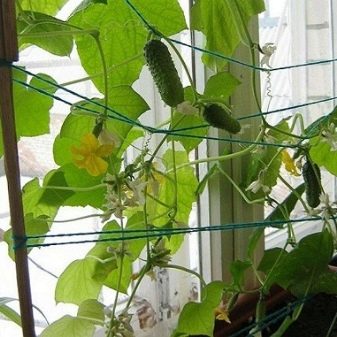

Formation
It is always necessary to form bushes at home. This is done by pinching 10-12 leaves, as well as removing the antennae. For growth, you need to leave only one vine so that all the ovaries are on it.
All lateral shoots are cleaned, they are removed above the ovary, leaving one leaf. Some vegetable growers get rid of only the lower shoots, and above the fourth node they leave it as it is, but pinch the whips from the sixth bush.
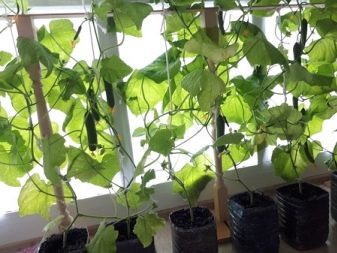

Fertilizer
The first feeding is done after germination. The sprouts are fertilized two weeks after emergence, and after another week, the procedure is repeated. You can feed it with factory urea (10-12 balls per 2 liters of water) if you notice that the foliage is curling and the stem is too thin. If the bush has bloomed or fruits have already appeared, then nitrogen fertilizers are prohibited, since they can increase the level of nitrates in vegetables. The same applies to organic matter, and the use of chicken manure in the room is not so hygienic.
In home cultivation, potash and phosphorus compounds help out.There are many varieties of superphosphate fertilizers, you need to read the instructions and when the ovary or flowers fall off, the leaves become dry, the bushes need to be fed. Potassium is needed for the cucumbers when a white edging appears all over the leaf. If the plants are not fed in time, the leaf will fall off.
A lack of potassium can lead to the death of a cucumber bush, so stock up on this necessary element and, if necessary, dilute a pinch of the mixture in 1 liter of water and water the culture.
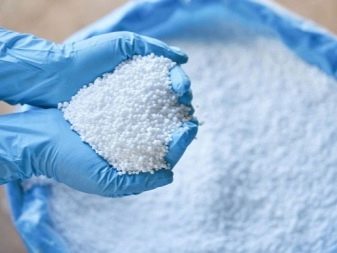
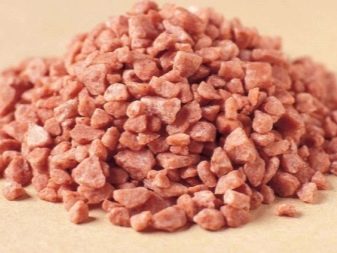
Diseases and pests
Hybrids are generally quite resistant to major cucumber diseases, however, the plants must be constantly examined for harmful creatures and diseases. If the leaves curl and dry, the vine does not stretch well, the ovaries do not tie and fall off, the bushes turn yellow, and so on, then all these are signs that the plant needs to be saved.
Cucumbers are treated at home mainly with folk remedies, it is better to refrain from chemistry... Insects can be destroyed by hand, or alternative methods can be applied. So, spider mites are afraid of garlic tincture, and aphids and whiteflies are afraid of tobacco. Factory drugs such as "Fitosporin", "Bitoxibacillin" and others are used before the formation of ovaries and with great care.
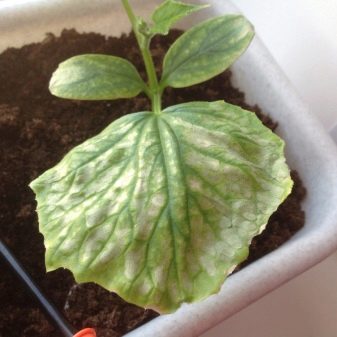
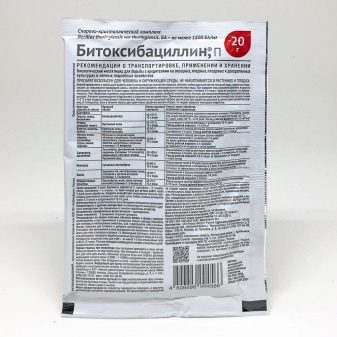
Tips for Beginners
For cucumbers growing indoors, light, including natural light, is very important. More harvest will be given by those plants that grow on the windowsill of windows facing the south and east sides. Even with additional lighting, those bushes that grow on the north and west sides will not give a decent harvest and high-quality fruits.
Experienced gardeners share other tricks and tips:
- after at least 3 months, you need to pour the soil into the container where the cucumbers grow;
- if the lower foliage begins to dry, it's time to check and adjust the humidity and temperature parameters;
- when the seedlings stretch in one direction only, they do not have enough light, but additional illumination will correct the direction of the vine;
- so that hybrids intended for growing at home do not taste bitter, you must strictly follow all the rules of care, otherwise they will give bitterness.
If the fruit has not grown from the ovary, you can feed the bush with iodine solution... One drop of iodine is dripped onto 300 ml of water and this composition of the container is carefully watered at the edge so as not to burn the stems and the root system.
There can be a lot of tips and instructions, but in fact, you can grow an environmentally friendly crop of cucumbers without additional hassle. The main thing is to have the desire and observe the main points that we touched upon in this article.
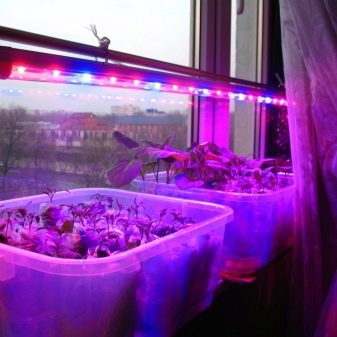














The comment was sent successfully.